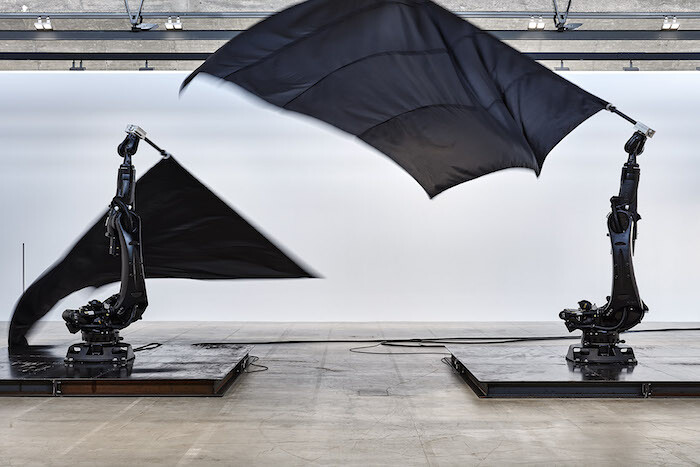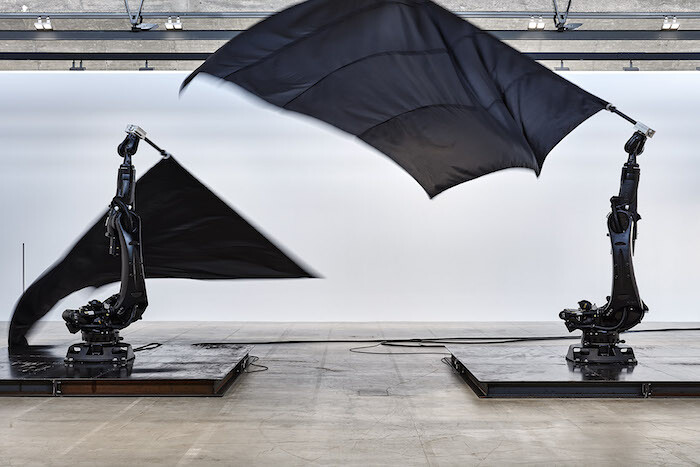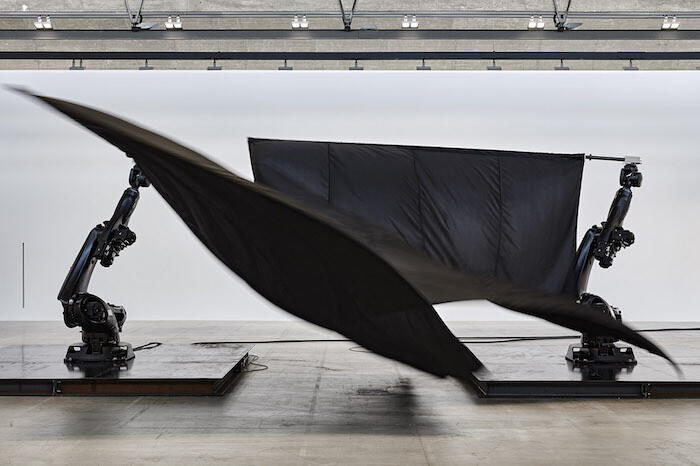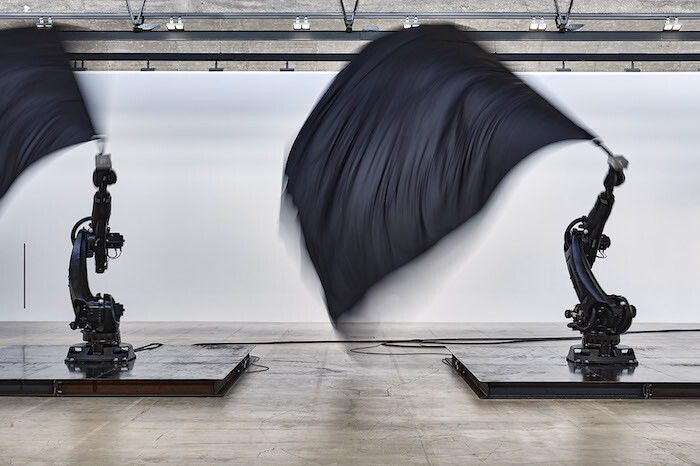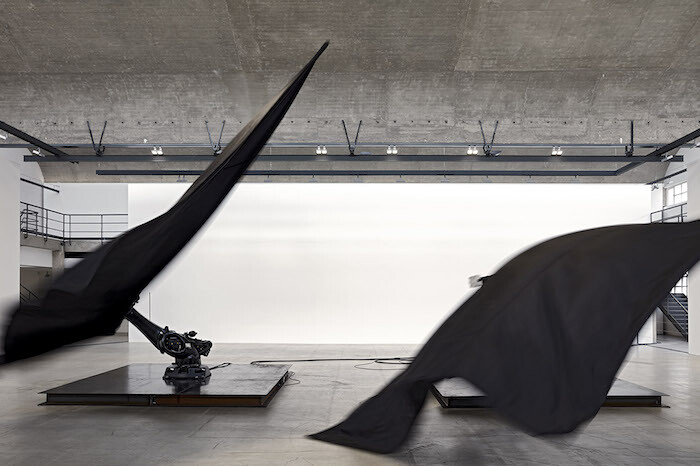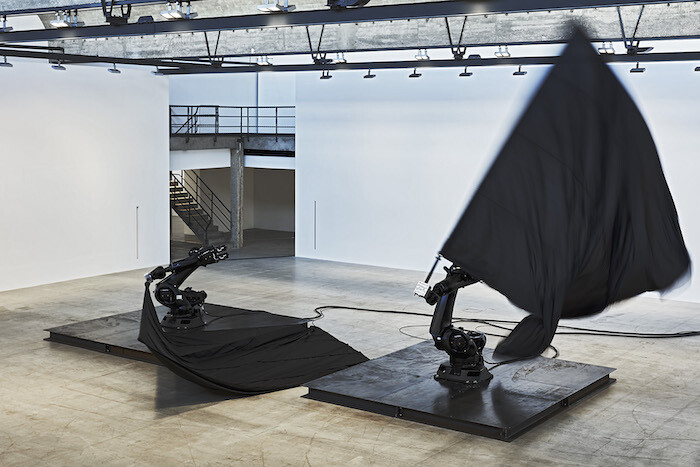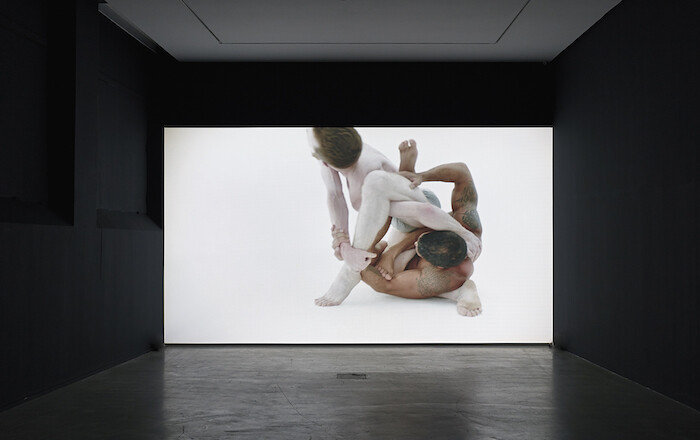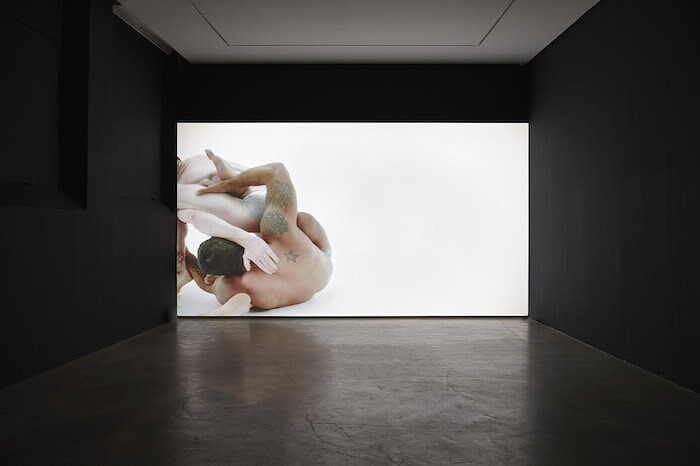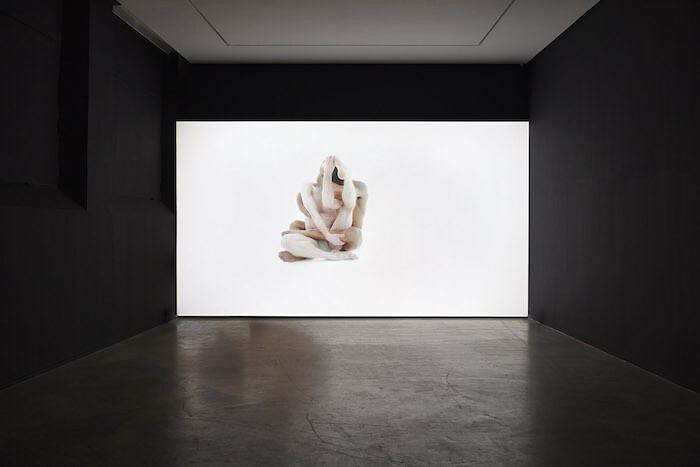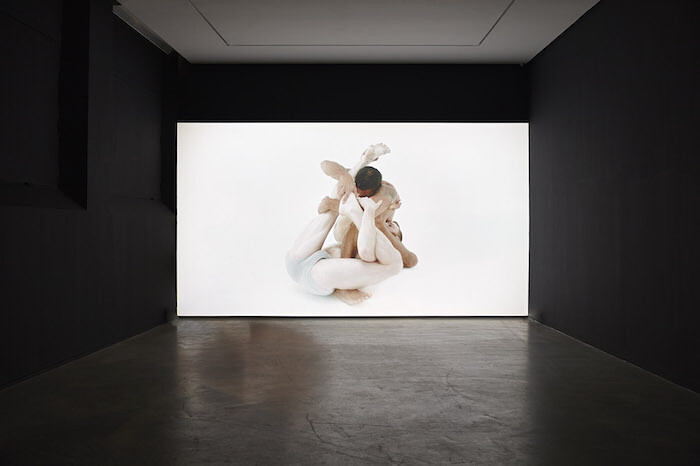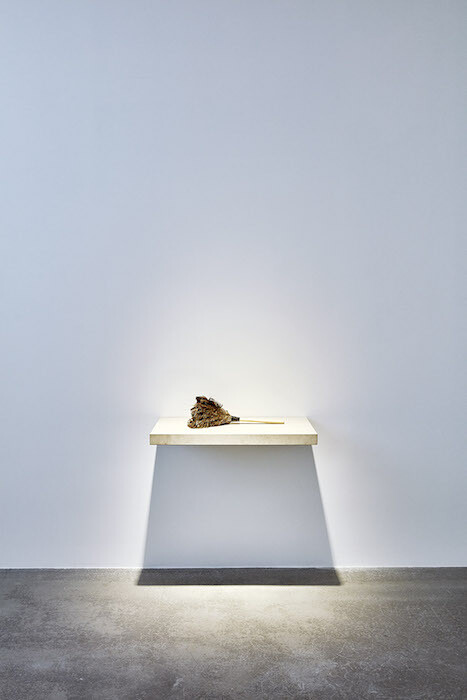There were no hesitations, no missteps; no point at which one limb converged onto another, when one cut of cloth got caught up in another. A pair of machines, whose materials were listed obliquely, solely, as “readymade industrial robots,” rest promenade-style, side by side, oriented toward the entrance—toward me—before the flailing rods’ algorithm-determined chassé started up again. Each figure is a slab of steel on the ground, plane extending several square meters, and anchoring an eight-ton robotic arm at its center, grasping a five meter-high carbon fiber flagpole from which hangs an enormous raven nylon flag. The entire display is murdered out, from the seven heavy rotating joints to the high-voltage cables bundled together, snaking to the obscured generators powering the 28-minute-long duet.
Supplanting industrial, motorized instruments for the medium in which he is best known—movement for humans—these “Choreographic Objects” are impossible to comprehend without a preface of the codes that William Forsythe has written to program breathing bodies. The American choreographer was staging for the Stuttgart Ballet in 1976 before he was named artistic director of the Frankfurt Ballet in 1984, leaving only after three decades, when the city’s strapped arts funding administration proposed more conservative, populist productions. He established the Forsythe Company in 2005, with the support of several of the municipal ballet company’s dancers, as well as, ironically, the city of Frankfurt am Main itself.
Razor precision—in the architecture of his dancers; in the rich depths of a synthesized electronic score; in his compositional scaffolding, with architect Daniel Libeskind—became his mark. Already fluent in Laban Movement Analysis and other languages of notation, and pushing the lessons of George Balanchine—épaulement, or stressing the degrees of torsion between the upper body and legs; pas de deux, only now pulling open one’s angles well past 180 degrees—Forsythe became so proficient in posture angularity that he eventually released Improvisation Technologies: A Tool for the Analytical Dance Eye (1999), a 100-chapter video course illustrating the relationships between points in the body. The nineties graphics outline the most straightforward corporal commands in granular detail: the lesson “Folding,” for example, has Forsythe modeling the action of bending and straightening from the crook of his elbow. His articulation of both sentient motion and hardware is on view at Gagosian in the film Alignigung 2 (2016), a tangle of two dancers suspended in white space, their axis of balance renegotiated with each reach out and through.
Performing their isolations together but out of synch, the skimming onyx flags here are sized to that of national emblems at sports arenas to suggest their gesture of camaraderie; they also might allude to the harmony—insentient intimacy—in the flit between the automated sculptures. These objects are a development of his earlier work As A Garden in This Setting (1992), in which a dancer’s aerial calligraphy of a ribbon pulled by a fly-fishing pole could not be sustained adequately to be recorded through motion capture. The machines also perform in a way that dancers or, in this scenario, athletes, even at the height of physical fortitude, could never do: center one’s entire body strength to hold a flag still or control its course in absolute mastery. This failure of the mortal system is again proven in its near opposite. Towards the Diagnostic Gaze (2017) is a more familiar readymade at the sidelines of the objects: a feather duster. Held in the hand, the fringes betray the insignificant sway that we can’t be deprogrammed from, even when the tell is nearly weightless.
The day I visited, teenagers were hanging out in an upper balcony, enacting their own underhand choreography to pass the afternoon. The gaggle was oblivious to the exhibition; they were a glitch on the screen where the motorized ballet played out, their presence alien and entirely chance. Located in a hangar of Le Bourget, a small airport on the outskirts of Paris mainly used to host the landings of private jets, the noise of the imposing forms’ flawless machinations fills Gagosian’s cavernous space easily, in the same way that opening the door of an airplane is the sound of a vacuum opening up the space around it, only to pull it closed and retreat to first position, in silence. It is what crushing velvet, amplified by multiples, must sound like.
